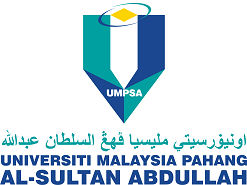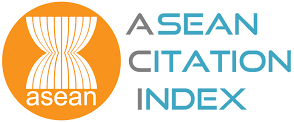The effect of pulse welding parameters on weld geometry of boron steel using low power fibre laser
DOI:
https://doi.org/10.15282/jmes.11.3.2017.10.0261Keywords:
Boron steel; Fibre laser; laser welding; welding parameters.Abstract
Demands of tailored weld blank application on press hardened materials such as boron steel have given interest in the process parameter study of laser welding. The pulse wave mode of laser welding produces high peak power, replacing the continuous wave mode which could lead to wider applications. Due to complications on the process parameter of PW mode, the study of parameter effect is needed. In this paper, the effect of PW welding parameters on weld geometry of boron steel using Fibre laser is presented. Pulse overlap (PO), peak power (PP), pulse duration (PD) and pulse repetition rate are the common process parameters for PW mode used in this study. The bead on plate welding was conducted on uncoated boron steel and observation on width and depth of penetration was done. Based on the results, the higher PO produced deeper penetration and also a bad weld appearance. The effective pulse energy and effective peak power density were the result of the actual condition in pulse seam weld related with overlapping index generated from PO condition. The PP and PD were the related parameters that affected the energy of the beam, giving a significant effect on weld width and penetration. The energy of the beam showed the significance on weld geometry in low peak power laser application and the value will increase with the increase of PD. In contrast, PRR had no significant effect on weld geometry. The constant pulse overlap parameter produced constant energy applied for each pulse which led to no effect on weld geometry.
References
Gan W, Babu SS, Kaputska N, Wagoner RH. Microstructural effects on the springback of advanced high-strength steel. Metallurgical and Materials Transactions A. 2006;37:3221-31.
Xiaodong Z, Zhaohui M, Li W. Current Status of Advanced High Strength Steel for Auto-making and its Development in Baosteel. Shanghai, China: Baosteel research institute; 2011. p. 1-8.
Chen G, Shi MF, Tyan T. Optimized AHSS Structures for Vehicle Side Impact. SAE International Journal of Materials and Manufacturing. 2012;5:304-13.
Májlinger K, Kalácska E, Russo Spena P. Gas metal arc welding of dissimilar AHSS sheets. Materials & Design. 2016;109:615-21.
Galán J, Samek L, Verleysen P, Verbeken K, Houbaert Y. Advanced high strength steels for automotive industry. Revista de Metalurgia. 2012;48:118-31.
Kuziak R, Kawalla R, Waengler S. Advanced high strength steels for automotive industry. Archives of Civil and Mechanical Engineering. 2008;8:103-17.
Rossini M, Spena PR, Cortese L, Matteis P, Firrao D. Investigation on dissimilar laser welding of advanced high strength steel sheets for the automotive industry. Materials Science and Engineering: A. 2015;628:288-96.
Uchihara M. Joining technologies for automotive steel sheets. Welding International. 2011;25:249-59.
Merklein M, Johannes M, Lechner M, Kuppert A. A review on tailored blanks—Production, applications and evaluation. Journal of Materials Processing Technology. 2014;214:151-64.
Xu F, Wang C. Dynamic axial crashing of tailor-welded blanks (TWBs) thin-walled structures with top-hat shaped section. Advances in Engineering Software. 2016;96:70-82.
Shah LH, Mohamad UK, Yaakob KI, Razali AR, Ishak M. Lap joint dissimilar welding of aluminium AA6061 and galvanized iron using TIG welding. Journal of Mechanical Engineering and Sciences. 2016;10:1817-26.
Suder WJ, Williams S. Power factor model for selection of welding parameters in CW laser welding. Optics & Laser Technology. 2014;56:223-9.
Mei L, Chen G, Jin X, Zhang Y, Wu Q. Research on laser welding of high-strength galvanized automobile steel sheets. Optics and Lasers in Engineering. 2009;47:1117-24.
Bardelcik A, Worswick MJ, Wells MA. The influence of martensite, bainite and ferrite on the as-quenched constitutive response of simultaneously quenched and deformed boron steel – Experiments and model. Materials & Design. 2014;55:509-25.
Mei L, Yan D, Yi J, Chen G, Ge X. Comparative analysis on overlap welding properties of fiber laser and CO2 laser for body-in-white sheets. Materials & Design. 2013;49:905-12.
Assunção E, Quintino L, Miranda R. Comparative study of laser welding in tailor blanks for the automotive industry. The International Journal of Advanced Manufacturing Technology. 2009;49:123-31.
Hong K-M, Shin YC. Prospects of laser welding technology in the automotive industry: A review. Journal of Materials Processing Technology. 2017;245:46-69.
Sharma RS, Molian P. Weldability of advanced high strength steels using an Yb:YAG disk laser. Journal of Materials Processing Technology. 2011;211:1888-97.
Sharma RS, Molian P. Yb:YAG laser welding of TRIP780 steel with dual phase and mild steels for use in tailor welded blanks. Materials & Design. 2009;30:4146-55.
Moon J-H, Seo P-K, Kang C-G. A study on mechanical properties of laser-welded blank of a boron sheet steel by laser ablation variable of Al-Si coating layer. International Journal of Precision Engineering and Manufacturing. 2013;14:283-8.
Tang B, Yuan Z, Cheng G, Huang L, Zheng W, Xie H. Experimental verification of tailor welded joining partners for hot stamping and analytical modeling of TWBs rheological constitutive in austenitic state. Materials Science and Engineering: A. 2013;585:304-18.
Hetch J. Fiber lasers-The state of the art. Laser Focus Word2012. p. 1-22.
Moskvitin GV, Polyakov AN, Birger EM. Application of laser welding methods in industrial production. Welding International. 2013;27:572-80.
Kawahito Y, Mizutani M, Katayama S. Investigation of High-Power Fiber Laser Welding Phenomena of Stainless Steel. Transactions of JWRI. 2007;36:11-6.
Selamat NFM, Baghdadi AH, Sajuri Z, Kokabi AH. Friction stir welding of similar and dissimilar aluminium alloys for automotive applications. International Journal of Automotive and Mechanical Engineering. 2016;13:3401-12.
Wor LC, Rahman MM. Stress behavior of tailor-welded blanks for dissimilar metals using finite element method. International Journal of Automotive and Mechanical Engineering. 2015;11:2541-54.
Ishak M, Noordin NFM, Razali ASK, Shah LHA, Romlay FRM. Effect of filler on weld metal structure of AA6061 aluminum alloy by tungsten inert gas welding. International Journal of Automotive and Mechanical Engineering. 2015;11:2438-46.
Asmara YP, Siregar JP, Shah LH, Tezara C. Experimental investigations on corrosion model of welded 6061 aluminum exposed in NaCl solution. International Journal of Automotive and Mechanical Engineering. 2015;11:2600-7.
Hussin MH, Che Lah NA. Effects of temperature on the surface and subsurface of Al-Mg-Si welded joints. Journal of Mechanical Engineering and Sciences. 2017;11:2743-54.
Hasan MM, Ishak M, Rejab MRM. A simplified design of clamping system and fixtures for friction stir welding of aluminium alloys. Journal of Mechanical Engineering and Sciences. 2015;9:1628-39.
Assuncao E, Williams S. Comparison of continuous wave and pulsed wave laser welding effects. Optics and Lasers in Engineering. 2013;51:674-80.
Tzeng Y-F. Parametric analysis of the pulsed NdYAG laser seam-welding process. Journal of Materials Processing Technology. 2000;102:40-7.
Fuerschbach PW, Eisler GR. Effect of laser spot weld energy and duration on melting and absorption. Science and Technology of Welding and Joining. 2013;7:241-6.
Malek Ghaini F, Hamedi M, Torkamany M, Sabbaghzadeh J. Weld metal microstructural characteristics in pulsed Nd: YAG laser welding. Scripta Materialia. 2007;56:955-8.
Sabbaghzadeh J, Hamedi MJ, Ghaini FM, Torkamany MJ. Effect of Process Parameters on the Melting Ratio in Overlap Pulsed Laser Welding. Metallurgical and Materials Transactions B. 2008;39:340-7.
Tadamalle AP, Reddy YP, Ramjee E. Influence of laser welding process parameters on weld pool geometry and duty cycle. Advances in Production Engineering & Management. 2013;8:52-60.
Ascari A, Fortunato A. Nanosecond pulsed laser welding of high carbon steels. Optics & Laser Technology. 2014;56:25-34.
Tzeng Y-F. Process Characterisation of Pulsed NdYAG Laser Seam Welding. International Journal of Advance Manufacturing Technology. 2000;16:10-8.
Markovits T, Takács J. Edge welding of laminated steel structure by pulsed Nd:YAG laser. Physics Procedia. 2010;5:47-52.
Sinha AK, Kim DY, Ceglarek D. Correlation analysis of the variation of weld seam and tensile strength in laser welding of galvanized steel. Optics and Lasers in Engineering. 2013;51:1143-52.
Downloads
Published
Issue
Section
License
Copyright (c) 2017 The Author(s)

This work is licensed under a Creative Commons Attribution 4.0 International License.





